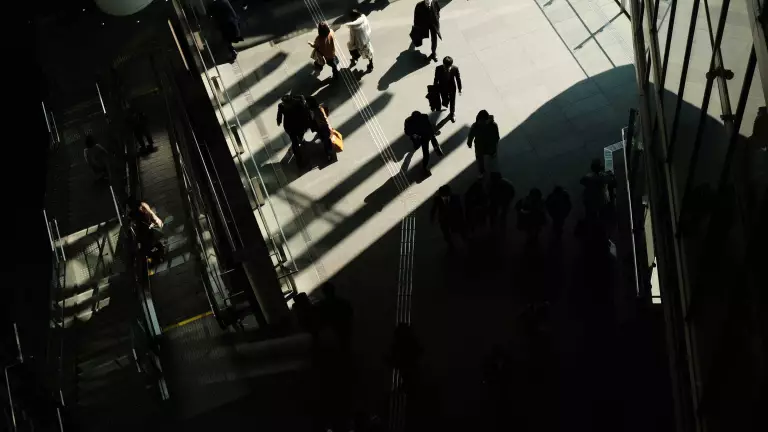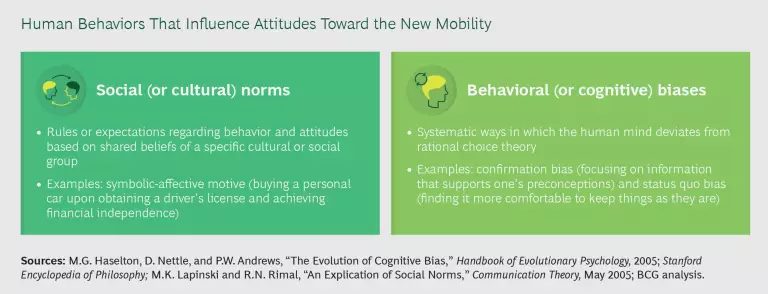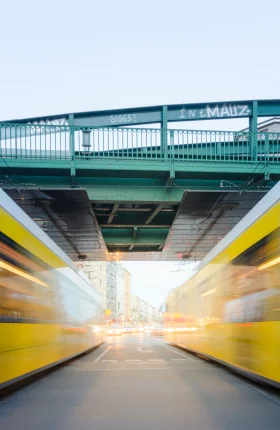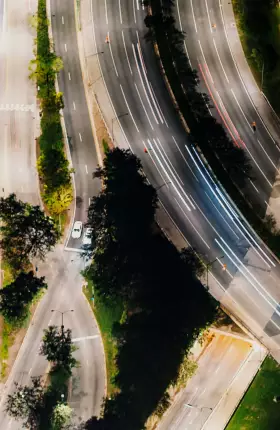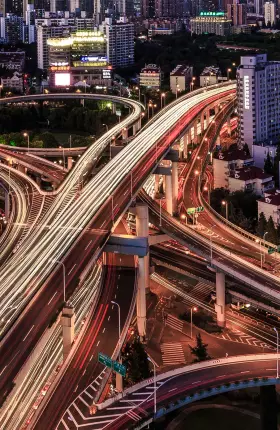When choosing a way to travel from one location to another, people don’t always opt for the logical solution—the one that is quickest, most convenient, least expensive. That’s true even when they are presented with evidence of efficiency and even when they are offered perks like reduced pricing. Personal feelings and biases influence their decisions.
That’s one reason why people in cities around the world have been reluctant to leave their personal vehicles behind and travel via public transit and new-mobility options, like ride sharing, ride pooling, and free-floating (sometimes electrified) bikes and scooters. And this is despite the fact that these travel modes can be faster, cheaper, and more convenient—and address the urgent challenges of traffic congestion, pollution, safety, and unequal access to mobility in cities worldwide . The personal car remains the top choice for commuting even in congested cities where more convenient and sustainable options exist. In Paris, for instance, 43% of commuters rely on personal cars while 20% use public transportation; in Boston, the split is 73% versus 14%; in Jakarta, it’s 78% versus 20%. Meanwhile, the average occupancy rate of a personal car is just 1.54 people per trip in the US, where every car spends 95% of its lifetime parked, according the US Department of Transportation.
To improve uptake, new-mobility operators have looked at the practical shortcomings of their offerings and attempted to overcome them—optimizing timing and improving user interfaces, for instance. But they have not taken into account the seemingly irrational behaviors, based in social norms and cognitive biases, that work against the new mobility.
Public authorities and new-mobility operators need to understand these powerful factors in order to combat them and encourage different behavior. Changing behaviors is difficult, and in the midst—and the aftermath—of COVID-19, it could turn out to be even more complex. But the problems that new-mobility options aim to tackle are not going away. Though the postpandemic outlook is not yet clear, public authorities and new-mobility operators will need to address existing and new challenges to help shape the new reality.
Why Is There Resistance to New-Mobility Options?
Public authorities and operators of new-mobility services have been diligent about applying the well-known avoid-shift-improve framework to drive the transition from personal vehicles to new, shared, and more sustainable options:
- Avoid. Some travel can be avoided altogether when previously disparate venues are collocated. Encourage this through appropriate land use and transportation infrastructure development. Also, where possible, encourage telecommuting and other uses of information and communication technologies to replace travel.
- Shift. Provide alternatives to the personal car that can attract users. For short-distance trips, encourage green alternatives provided by micromobility options such as bicycles and scooters (possibly electrified or shared). For longer trips, encourage the use of fixed-route or on-demand transit .
- Improve. For those trips that must be made by car, improve fuel efficiency (through electrification, for instance) and increase occupancy (through carpooling, for instance) in order to reduce congestion and negative environmental impacts.
Unfortunately, these efforts have not yielded as much change as desired. Why? BCG research (conducted with the World Economic Forum) on the uptake of autonomous vehicles helps explain what has been missing in the push toward new-mobility options. In a conjoint analysis, a sample of Boston residents were asked whether they would choose autonomous taxis given various scenarios of price, convenience, and speed. The number of positive responses was three times lower than what a functional model had predicted.
The reason for the difference between the actual responses and the functional prediction? Human behavior. Commuters are not making their transportation decisions based solely on functionality or utility. Rather, they are influenced by social norms and cognitive biases. (See the exhibit.) By understanding these underlying factors, mobility operators and public authorities can begin to address and influence them in ways that encourage the use of public transportation and new-mobility options.
What Is Working Against the Use of Public Transportation?
The norms and biases that make people disinclined to use public transportation in favor of continuing to use their own cars range from pride of ownership to simple risk avoidance.
Car Pride. Through decades of advertising, carmakers have carefully curated the image of cars in general and of individual makes and models in particular. Some brands promote safety and the ability to keep families safe, for instance, while others position themselves as a means to freedom or as signifiers of luxury and financial success. Social status and a person’s self-image have come to be linked to vehicle ownership and use, a phenomenon that MIT researchers (including Joanna Moody, one of the authors of this article) call car pride.
The positive image of the car has gone unchallenged for decades, allowing these strong norms to take hold and become firmly integrated into behavioral habits. A confounding factor: negative associations with modes of public transportation, particularly buses, have hampered ridership and reinforced cognitive biases against them.
Status Quo Bias (or the Power of Default). People find comfort in keeping things as they are. Inertia is more likely than change, partly because altering one’s habits requires mental effort—a challenge referred to as cognitive load
Operators have not taken into account the seemingly irrational behaviors, based in social norms and cognitive biases, that work against the new mobility.
Car use is certainly an entrenched habit for many. Changing that habit imposes a cognitive load that is amplified if the switch in the daily commute involves multimodal travel, which requires regularly choosing among varied modes—maybe even for each individual trip. That’s a challenge, especially compared with the perceived convenience of taking one’s own car and not having to make any of those choices. It can be easier to default to the habit of driving one’s own car, on one’s own, than to use the car more sensibly or to make even bigger changes that favor the environment.
Research into commuting behavior following the 2014 London Underground strike revealed how the status quo bias can affect commuting choices.
Halo Effect. When positive attributes are exaggerated and overshadow negative ones, leading to an overall positive judgment, the halo effect is at work. Car drivers tend to focus only on the benefits of car ownership and use, overemphasizing such advantages as individuality and freedom relative to critical burdens such as high gas costs or time spent in traffic.
Ambiguity Effect. When confronted with several options, people tend to avoid the ones for which the probability of a favorable outcome is unknown. Indeed, car drivers prefer known risks (for example, normal weekday traffic) to unknown risks (a bus or train breaking down or operating less frequently than expected). And this tendency is reinforced by an illusion of control—people typically overestimate their influence on external events, like traffic congestion.
What Is Holding Back Adoption of New-Mobility Options?
The status quo bias, halo effect, and ambiguity effect also contribute to the reluctance to adopt new-mobility modes. For instance, the ambiguity effect can limit the use of flexible, ad hoc carpooling because the initial ride (from home to work, for instance) does not come with the guarantee of a return ride; it can likewise limit the use of professional pooled ride-hailing services because of unknowns regarding potential detours to pick up or drop off other passengers. Several other issues connected to biases and norms can likewise hinder the use of new-mobility options.
Creation of Outgroups. By tackling sustainability issues in an innovative way, frequently by leveraging advanced technologies, many new-mobility operators have created a public image as disruptors. One result is that users of new-mobility options are seen as disruptors too, making them an outgroup set apart from commuters who use traditional modes like personal cars and public transportation. It’s not uncommon for aggressive behavior to be directed at outgroups. Bicycle riders have suffered from such labeling, for example; research shows that the more car drivers perceive cyclists in a negative light, the more likely they are to display aggressive driving behavior toward them. Fear of being a target of such outgroup labeling and aggression is perhaps hampering the uptake of new-mobility options.
Social Disruption and Friction. New approaches to mobility create not just technological disruption but also social disruption. Research from the European Union’s Horizon 2020 initiative shows that as users share goods, spaces, and information, the meaning of ownership shifts and questions regarding privacy arise. Shared new-mobility options are not clearly perceived either as public spaces, like public transportation, or as private spaces, like personal cars. (It could be the case, however, that shared vehicles such as shuttles are more likely to be seen as public spaces.) With no norms in place to guide social engagement in this gray area, privacy issues can hinder the shared use of cars.
Car ownership is reinforced not just by functional but also by “symbolic-affective” motives—the positive messages that ownership conveys.
Shared mobility may even trigger social friction. Indeed, research shows evidence of racial and social discrimination in shared mobility, from traditional taxis to new ride-hailing services. Discrimination can occur between driver and rider, and in pooled trips it can also occur between rider and rider. One study suggests that rider-to-rider discrimination in the US may present a barrier to the adoption and frequent use of ride-pooling services.
Fear of the Unknown. For many, new-mobility modes are unknown entities to be approached with caution. Some people are much more wary than others, and not surprisingly, the level of fear varies, particularly between users and nonusers. A study conducted in France found that free-floating e-scooters are considered dangerous by 38% of people who do not use them and by 18% of those who do.
Anchoring Bias. When making decisions, people tend to rely heavily—or to “anchor”—on a single piece of information, usually the one they acquire first. This, too, may hinder adoption of new-mobility modes. Someone may read about a collision involving an e-scooter and conclude that these vehicles are dangerous in all circumstances, for example, or an unsatisfactory first experience (trouble finding a charging station, for instance) may cause someone to never use a shared electric vehicle again. But new-mobility services are by definition new, so challenges are to be expected. The quality of service has improved dramatically for most modes, but some people may anchor on a negative first impression and allow it to become their final judgment.
Turning Norms and Biases into Advantages
The same social norms and cognitive biases that create challenges for sustainable urban mobility options can be leveraged to promote them. For example, public transportation authorities and new-mobility operators can work to revise social norms through informational campaigns and other policy levers using nudge theory, which proposes that positive reinforcement and indirect suggestions can influence the behavior and decision making of groups and individuals.
The same social norms and cognitive biases that create challenges for sustainable urban mobility options can be leveraged to promote them.
The Nutri-score labels recently added to food packaging in Europe are a good example. These labels use a color code to indicate a product’s nutritional value. In addition to reducing the cognitive burden of decision making, the system creates a positive association in shoppers’ minds with the labels indicating healthier choices, which helps make those products more attractive. Such nudges could likewise be used to urge people toward green and shared modes of transportation.
Here are four critical initiatives that public authorities and new-mobility operators can pursue to make these options more appealing:
- Communicate clearly and constantly. By providing as much information as possible (and making sure the information is clear and always accessible), service operators can significantly minimize the ambiguity effect and fear of the unknown and help users make more informed and confident decisions. To encourage people to use shared vehicles, give them a better upfront view of the condition of the vehicle they are about to book or a better understanding of where to park the vehicle after use, for instance. Don’t let the anchoring bias take hold.
- Promote and personalize. Branding and marketing will help individuals connect with the new offerings on an emotional and symbolic level—in the same way that they have traditionally connected with personal cars. Public transportation and new-mobility operators can find ways to market themselves not only as convenient but also as green, high-tech, innovative, social, and equitable. Any characteristics that might lure riders away from cars can and should be part of the effort to promote an alternative to car pride. Also, make it personal. To encourage greener alternatives, leverage people’s desire for a socially positive self-image. One tactic: provide the greenhouse gas emissions of each available mode. Faced with such clear information, people may choose the greenest option more often. Another idea is to use targeted campaigns that foster a feeling analogous to “flight shame”—which is significantly reducing air travel—to encourage a shift from the habit of car use because of its negative impact on the environment.
8 8 “‘Flight Shame’ Could Halve Growth in Air Traffic,” BBC News, October 2, 2019. It might even be possible to create a halo effect around new offerings by directing people toward mobility experiences that they feel good about. - Guide consumers’ mobility choices. Consumers presented with multiple choices tend to select the default option. So one way to trigger a desired behavior is to leverage the status quo bias by establishing a new default. This nudge has proved particularly effective in the field of energy supply, where consumers tend to stick with their default provider. When it comes to urban mobility, public authorities can provide the same kind of nudge by requiring ride-hailing operators or multimodal platforms to make the shared option the default and to present the available options in order, from the most environmentally friendly to the least.
- Engage via emulation. Social psychology suggests that the desire to conform to social expectations should change behavior-related decision making. Public authorities can use informational and educational campaigns, as well as their own power as role models, to encourage the use of mobility alternatives. For instance, they could develop a real-life game in which citizens collect points or badges when they leave their cars at home and choose a sustainable mode of transportation instead. Such an approach would avoid the negative effects that can accompany the creation of outgroups by casting users of public transit and new-mobility modes in a positive light. This “renorming” can also reduce social disruption and friction.
How can public authorities set up and deploy these initiatives to avoid, shift, and improve individual travel? The most efficient solution may lie in a fully integrated Mobility as a Service (MaaS) platform that allows people to easily utilize the best modes of transportation at the best time at the best price with the greatest ease. The platform would make trip planning, payment, and ticketing quick and convenient—and that’s a way to overcome the status quo bias that makes people reluctant to break old habits. People who use the MaaS platform to plan their commute would have all the information they need: where to park the vehicle after the trip, the greenhouse gas emissions per mode, the number of badges they’ve earned, and so on. Ultimately, such a platform—whether developed and operated by the local transportation authority or by a private company under contract—would be the best way to orchestrate mobility by regulating, incentivizing, and experimenting with ways to shift from car supremacy to a more multimodal and sustainable transportation system.
Physical distancing and ride sharing don’t mix. We expect that in the immediate wake of the pandemic, people will be all the more likely to rely on solo trips in their personal cars rather than options such as public transit and pooled ride hailing. But other changes in travel behavior may offset the potential negative effects of increased car use. Many cities have seen an uptick in bicycle usage during the pandemic, for example. Will the bicycle’s image as a safe and healthy travel option bring a sustained shift to cycling in cities around the world? Will the temporary reallocation of street spaces for walking and biking be made permanent? Will people who have learned to work comfortably and productively from home continue to do so? These are just a few examples of the ways that travel behavior may change for the better. For public authorities and new-mobility operators, this is all potential good news and an inspiration to continue to pursue safer, more sustainable, and more equitable means of transportation.
This article is the fourth in a series on the future of mobility. In subsequent publications, we will explore other options available to cities and new-mobility operators, drawing on the findings of our research. We welcome the input and participation of cities and private players.
